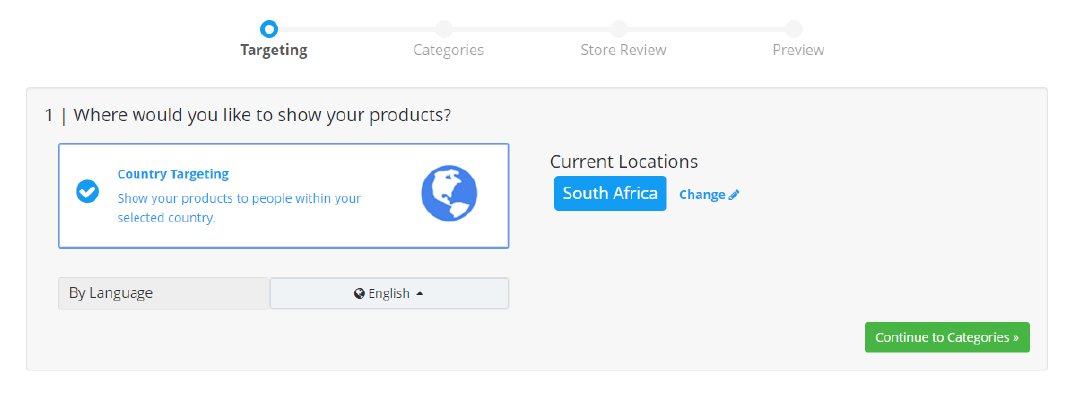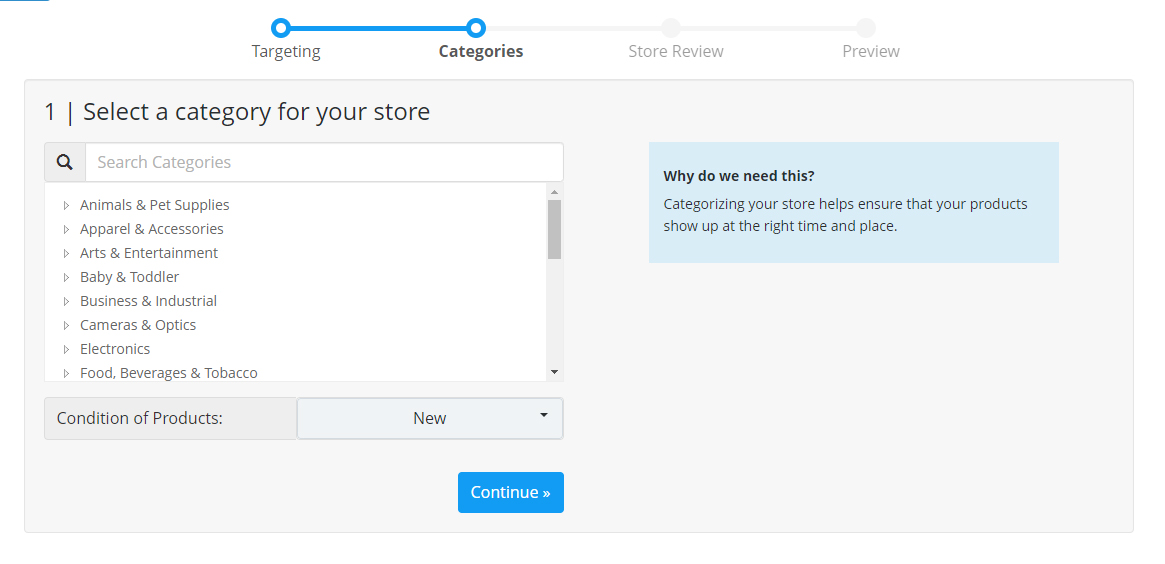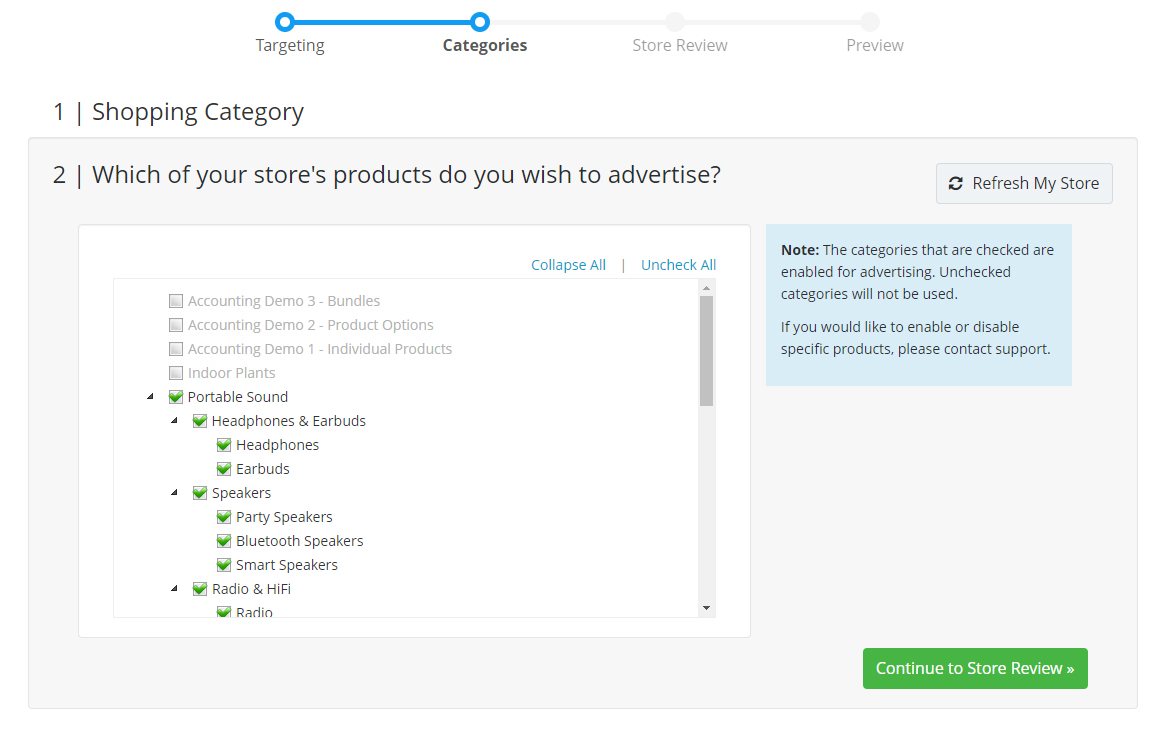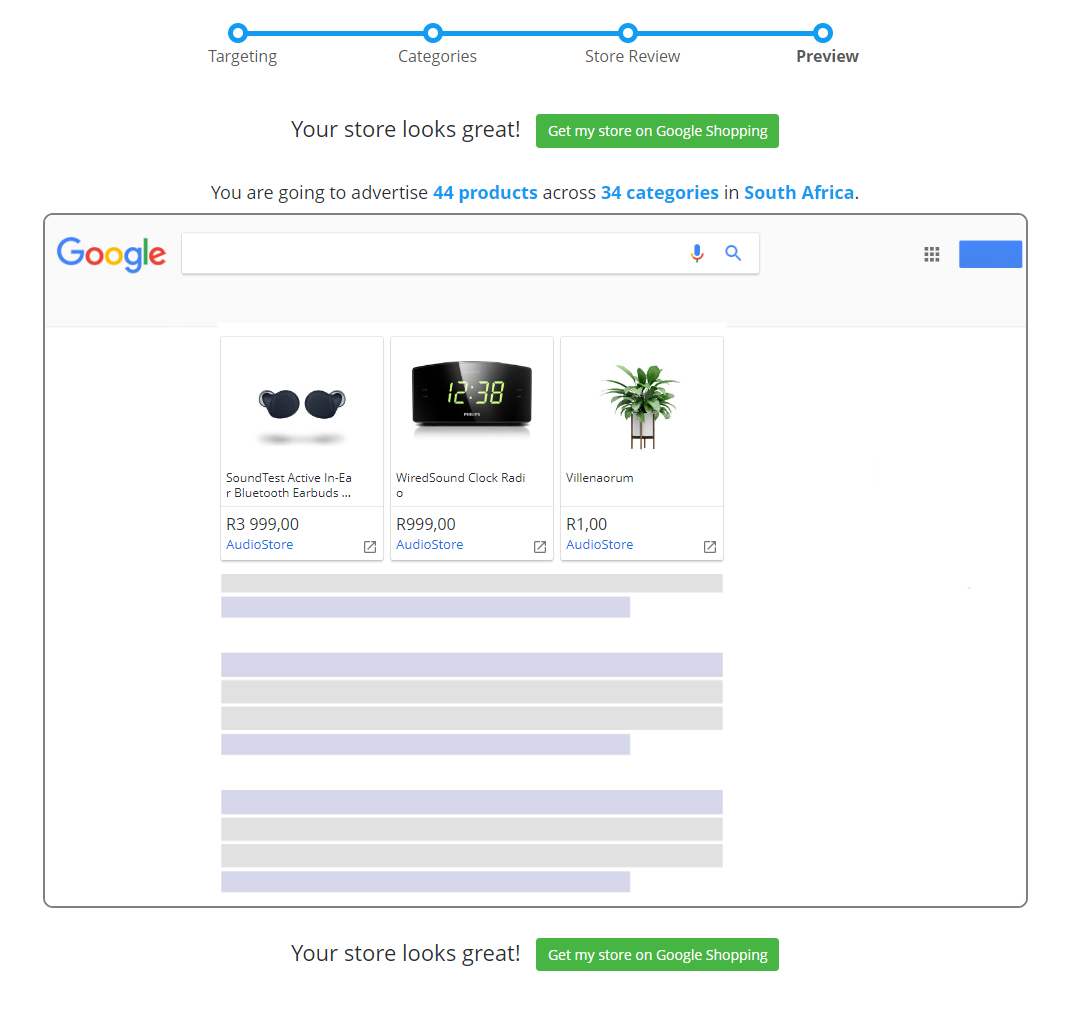Have no time for ads setup and management? You can use the integration between store and Google to run a hands-free promotion of your products with Google Shopping ads and find more customers across Google.
During the fast setup you can choose between placing free product listings on Google Surfaces or supplementing unpaid organic listings with paid ads through Google Smart Shopping campaigns to get the most exposure for your products and sell more.
What are the differences between Free listings and Smart Google ads?
Both kinds of ads can be automatically created from your store’s product feed in Google Merchant Center but they appear in different advertising spaces. To reach a wider audience you can augment free listings with the paid Google Smart Shopping ads.
Free Listings
With the free ads your products appear during relevant searches in unpaid listings on Google surfaces including the Google Shopping tab, Google Search, and Google Images. Your products should meet the Google Free Listing Policies for your ads to get successfully approved by Google after the ads setup.
Free listings in the Google Shopping tab are available to U.S. merchants, the global rollout is planned by Google by the end of 2020.
Paid Ads
The paid Google Smart Shopping ads appear in front of potential and existing customers in Google Search Network (next to search results, on Google Maps, Google Shopping, Google Images), Youtube, Gmail, and Display Network. The Google Smart Shopping service automates your bids and ad placements by using machine learning, it figures out the best time and place to show ads to your potential and existing customers. Note that the Google Shopping integration doesn’t support Google beta countries, you need to sell to one of the supported countries. Also, your store should meet the Google Shopping Policies.Before creating a Google Shopping campaign
Before you start advertising with Google Shopping ads, make sure to:
- Set up shipping and tax settings in the store admin. This is required for the Google Merchant Center.
- Show the information about payment options in your storefront. For example, you can add the logos of the credit cards you accept to the description of your store front page or add it to your site footer using CSS.
- Optimize your catalog. Google Shopping campaigns use your product feed to generate ads — they borrow images and pieces of descriptions from your catalog. For your ads to be a success, you can:
- categorize products wisely in your store so that they sit in the right categories and subcategories;
- optimize your product titles and descriptions for relevance by including high-value keywords into them;
- use product images of high quality and free of watermarks in your store.
Setting up Google Shopping ads
The setup of Google Shopping ads is fully automated by your store and Kliken and takes a few clicks:
- From your store admin, go to Marketing > Google Ads.
- In the Automated Google ads section, click Enable.
- Pick a country (you can only select one country per campaign) and a language (your ads will be shown to people who have selected this language in their browser settings)

- Click Continue to Categories. Pick the right Google category for your store to make sure your ad shows up in the right search results and select the condition of your products (New, Refurbished or Used). Example:

- Click Continue.
- Choose what products you want to advertise. If you don’t use categories in your store, all products will be automatically selected for ads. If you want to advertise specific products only, put them in categories in your store first and then select these categories for the campaign:

- Click Continue to Store Review.

- If any errors are indicated, click View Details and follow the instructions on how to fix them, then click the I fixed this, Refresh my store button.
- Click Continue to Preview to see how the ads will look like. Example:
- Click Get my store on Google Shopping.
- Select the preferred package to launch your low-effort Google Shopping campaign.
- That’s it. Your ads have been created.
Managing Google Shopping ads campaigns
As you find the advertising tactics that work best for your online store, you will very likely choose to adjust campaign settings in Google Shopping Ads. Switch the target audience, change the marketing category, or pick different products for serving your ads under the Manage tab in the Other Channels > Google Shopping > Manage section in your store admin.

To monitor the performance of your ads, click the Stats tab. Here you will see the number of views, cost per click, total revenue, and other vital statistics to help analyze your campaigns. This quantitative evidence will help you make informed adjustments when updating your campaign.
You may need to wait a couple of weeks before you start evaluating the Smart Shopping campaign performance. As Google Smart Shopping uses machine learning, it takes time for it to optimize your campaign for your specific budget, products, and audience.
Note that the Free Listings in the Google Shopping tab is a rather new Google offering, so currently there is limited performance reporting available for free ads.
Why can’t I find my Shopping Ads in Google?
It’s quite natural to search Google for your products after launching a Shopping Ads campaign. The breadth of your search depends on the level of detail in your product description and attributes in your store. Generally, we do not recommend searching for your own ads because:
- it does not reflect the true position of your ad,
- each visitor will have a different result,
- it can negatively affect your campaign by generating impressions without clicks (this lowers your click-through rate),
- there are many common reasons why you may not see your ad, even though your stats are accruing.
The best way to confirm your ads are running effectively is to look for your ad with Google’s Ad Preview and Diagnosis tool. In addition, we recommend:
- checking your Conversion tracking in Adwords account > Tools > Conversions,
- analyzing your Search term reports ensuring your bids are high enough to generate the correct search terms,
- making sure product titles accurately describe your product and search terms are included in the title and description.